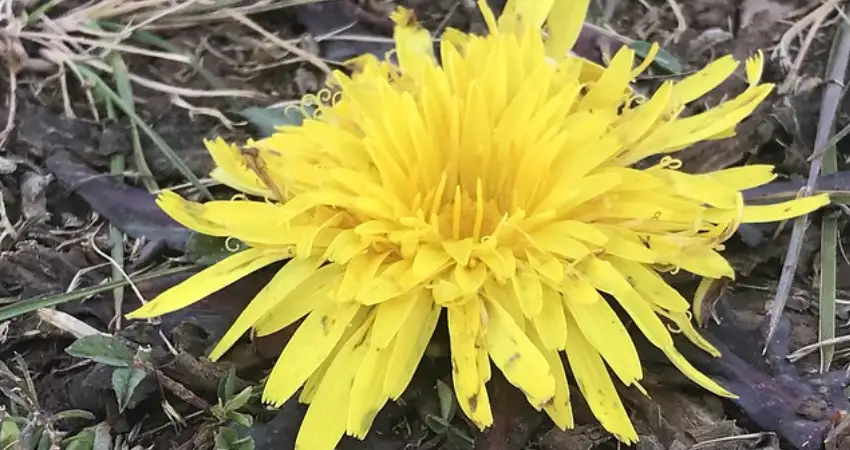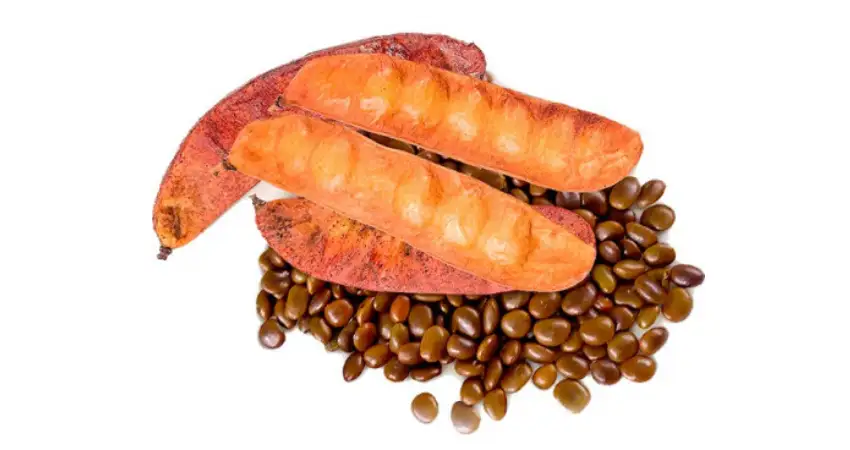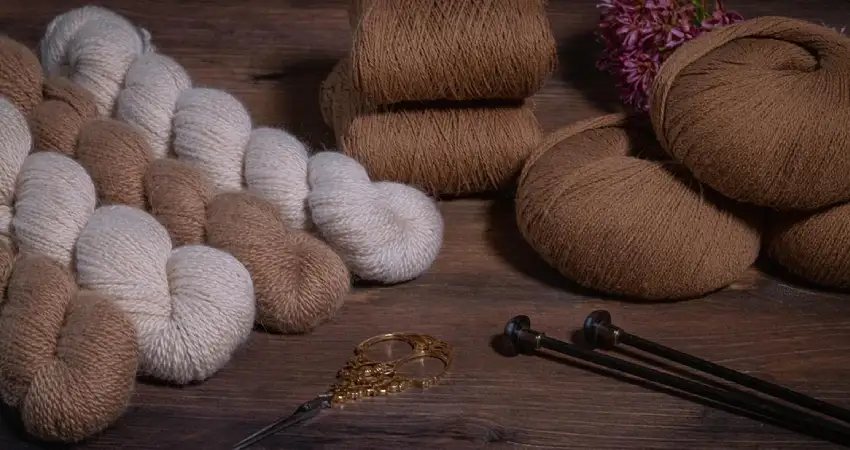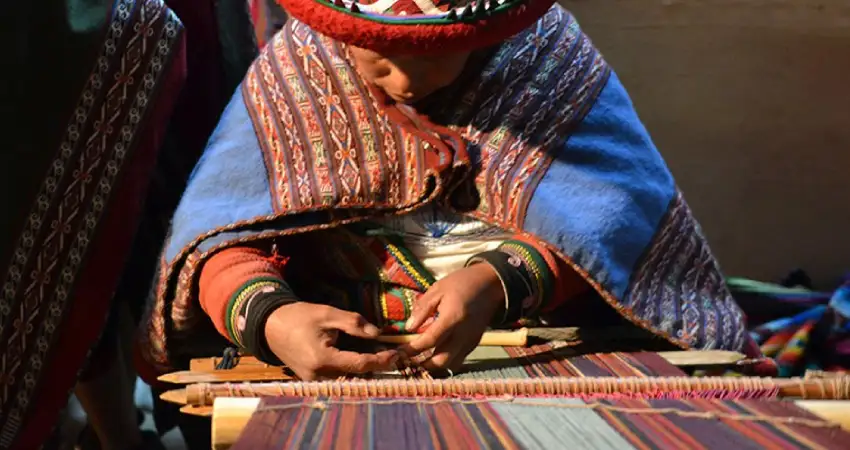
1.- OVERVIEW OF THE PERUVIAN TEXTILES
The Peruvian Textile is highly valued for the historical importance it contains, to such a degree that it is one of the fundamental elements that you can find in a museum because during the history of evolutionary process between cultures we see how it has a significant impact within their society. In cultures such as Nazca, Paracas and Moche it was evidenced that the Ancient Peruvian Textiles were used mainly with religious and funerary officials because mummies were found wrapped in fine Peruvian Textiles, with several layers linked to each other, notoriously you can see the delicacy that had its elaboration.
With the passage of time the later cultures until the Incas, adopted the technique of elaborating Ancient Peruvian Textiles not only for religious use, but also for use of social status. Since the garments were mainly made of alpaca, they opted to domesticate some species to make their wool much finer and this produced a Peruvian Textile of better quality and this was made only for royalty or for the Inca ruler exclusively.
In some Ancient Peruvian Textiles the use of multiple colors was evidenced and although at first it was a challenge to find out its origin, it was concluded that for the dyeing process of the Peruvian Textiles were used unique elements such as:
- Cochinilla: A particular insect that we find in the Penca (thorns), the use on the Ancient Peruvian Textiles resulted in a red tone, even it was also used as lipstick for women.
- Maras Salt: If you add Maras Salt to the red color we obtained previously, you will obtain an orange Peruvian Textile.
- Chincheros Flower: If we boil Chinchero flower (infusion) in a container we will obtain a yellow tone which we can use to dye a Peruvian Textile.
- Quilca Leaf: It is a very strong color enhancer and has a similar shape to the coca leaf. If you boil a handful of Quilca leaves and dip some Peruvian Textiles, a green tone is obtained.
- Tara Seeds: As a medicinal plant it helps with sore throats, but in relation to Peruvian Textiles it is a good dyeing element that gives the gray color.
- Purple Corn: Its use goes beyond just for its flavor, it is also an excellent element to dye all the Peruvian Textiles you want. You only have to boil them and then submerge your Peruvian Textile to obtain a lilac color.
- Quinsacucho Leaf: A medicinal plant from the Andes, when combined with some Peruvian Textiles you get a clear blue color.
2.- AN ART PIECE THROUGH TIME
“Immerse yourself in the vibrant tapestry of Peru’s textile tradition, where ancient Inca patterns dance with contemporary designs. Discover how these living masterpieces not only clothe and adorn but also preserve the rich cultural heritage of a nation, inviting you to take home a piece of Peru’s colorful soul!”
3.- THE ORIGINS AND EVOLUTION OF PERUVIAN TEXTILES
The Ancient Peruvian Textiles are undoubtedly the clearest example of the cultural expression that exists of cultures that over time have adapted to change, from ancient pre-Columbian civilizations to the present it is clear that every moment of time has left a permanent imprint on the art of Peruvian Textile.
3.1.- Chavin Culture
It is considered one of the first cultures of Peru and despite its antiquity they made use of advanced techniques such as interlacing and dyeing on Peruvian Textiles, its use was mainly religious and mythological in some cases.
3.2.- Paracas Culture
It stood out as a culture that used many of its Peruvian Textiles for funerary purposes, this culture stood out for the sophisticated technique of embroidery where their cloaks and tunics showed geometric images and representations of daily life.
3.3.- Nazca Culture
Although the world knows this destination for the famous Nazca lines and its impressive geoglyphs, it is also evident the talent that existed in the elaboration of many types of Peruvian Textiles. Among the techniques used are the backstrap loom and the horizontal loom, unlike other Peruvian Textiles, this one had multiple colors representing images of deities such as mountains and the sun, everyday animals such as llamas and humans in daily activities.
3.4.- Wari Culture
It was the closest culture to the Incas in terms of time of existence, this culture stands out for the Peruvian Textiles in the form of tapestries with geometric details, although they looked simple the reality is that they were quite complex because they contain multiple layers and textures.
3.5.- Inca Culture
It was considered the largest culture in South America, encompassing multiple countries during its period of expansion. It is for this reason that their textile art expanded to corners where no one had gone before. Within this culture the Peruvian Textiles represented more than just pieces of clothing, they were a symbol of social status and power over the people. They were made from alpaca and vicuña fibers with geometric patterns that were often used in ceremonies or as gifts for other leaders whom they wanted to integrate into the culture.
3.6.- Colonial times
During the colonial time many things changed and this also implied a change within the Peruvian Textiles, it was no longer only alpaca fiber or wool, also used finer elements brought from Europe such as linen and silk but of course internally the Andean belief kept many of the traditional techniques and styles that were later adapted and merged with new trends.
3.7.- In the present
They are still part of the life and cultural identity of the people of the Andes, these techniques are still present in indigenous communities and handicraft spaces such as traditional markets, however, Peruvian Textiles have gained a deserved recognition worldwide being highly desired by travelers who come to visit the country. Even some Peruvian designers like Meche Correa have made Peruvian Textiles to be considered as a current fashion highlighting its richness as a cultural heritage.
4.- FIBERS USED IN PERUVIAN TEXTILES
The origin of Peruvian Textiles is based on natural fibers extracted from some Andean camelids such as alpaca, sheep and others. Each one contains a personal and own characteristic which makes them unique in its kind, some of these fibers are:
4.1.- Alpaca wool
It is considered one of the most popular and prized fibers in the world not only for its softness but also for its durability and certain thermal characteristics which helps a lot with low temperatures. Something curious about this fiber is that it does not contain Lanolin (this makes it hypoallergenic so no one is allergic to this type of fiber), it naturally contains different colors and is mainly used for the elaboration of sweaters, ponchos, scarves, blankets and gloves.
4.2.- Sheep wool
It is a lower quality fiber and is not naturally native to Peru, however, due to the high population of sheep, a large amount of this fiber is obtained. It is quite resistant, warm and very elastic, although it is less soft than Alpaca wool, it is used to make many products such as carpets, rugs and other warm garments.
4.3.- Cotton
With an antiquity of 4500 years in history, it is an element that has been present in the daily life of many cultures until today. This element is extremely fine as it has a very soft and resistant characteristic as well as brightness. Cotton is also of very good quality that has a considerable durability, from this fiber can be made from all kinds of Peruvian Textiles such as clothing, sheets, towels and other items for everyday use.
4.4.- Vicuña Fiber
We can assure that this fiber is one of the most exclusive and expensive in the world. Thanks to the fact that the vicuña is a protected species by the Peruvian government, the production of its fiber has become a very controlled, safe and sustainable process, as well as a responsible one. It is used for the production of unique and really luxurious garments such as coats, sweaters and scarves, as the production of the fiber is controlled, there is not much production of garments or articles based on this fiber.
| “Unravel the threads of ancient wisdom: Let Peru’s vibrant textiles weave you into an unforgettable journey.” |
5.- MARKETS AND SHOPPING DESTINATIONS
5.1.- Pisac Market
For many years every Tuesday, Thursday and Sunday of each week the streets of the town of Pisac are filled with colors with a traditional craft market in which every step you take you can find thousands of unique souvenirs and among them are the Peruvian Textiles with styles typical of this town. The particularity of this curious town is that its tradition is based on the elaboration of ceramics and textiles, so if you manage to get a piece of textile art you will be getting a part of the culture that is kept alive.
5.2.- San Pedro Market (Cusco)
It is considered the most important traditional market in the city of Cusco, is a place where culture and tradition is centered so it is not strange that it is also a place where you can find some examples of Peruvian Textiles. You will find several options of many prices that can be adjusted to your pocket so you can get a nice souvenir.
5.3.- Chinchero Town
One of the most traditional villages that you can find in the Sacred Valley, Chinchero is undoubtedly a place where the textile culture is kept alive and many of the villagers to this day proudly wear their traditional clothing in their daily life, in some cases it is to exhibit certain characteristics for example the use of hat with a certain color refers to the love status (if married, single, etc.) or if you are about to marry. It is a traditional display that is appreciated by thousands of travelers who come to this destination.
No matter where in Peru you choose to go on your next trip, we are sure you will find the right time to get a piece of Peruvian Textile and feel it is the best thing in the world. Auri Peru can make this dream come true as a personalized and tailor-made adventure, contact us now and take the first step in this planning.
“Where every step is a story: Write your next chapter in Peru.”










































